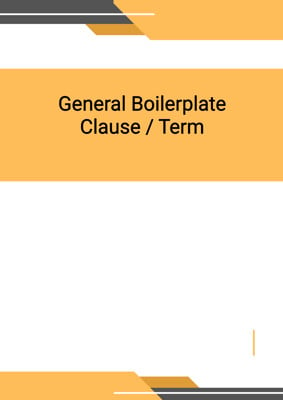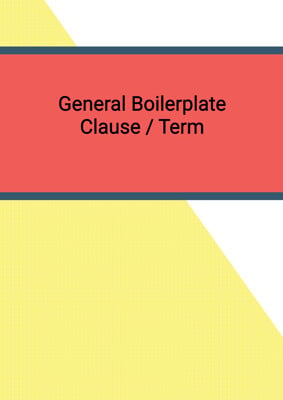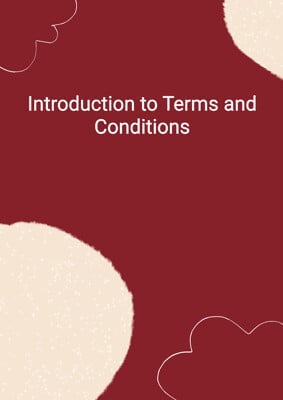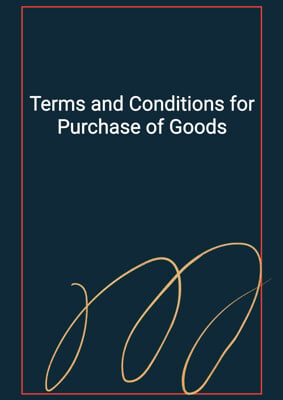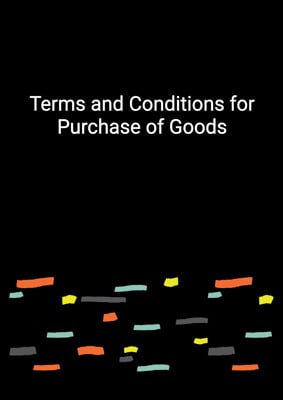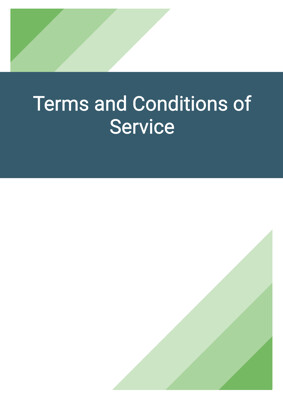How to Tailor the Document for Your Need?
01
Create Document
Click "Create Document" button and the document will be prepared with your account details automatically filled in.
02
Fill Information
Please fill in any additional information by following the step-by-step guide on the left hand side of the preview document and click the "Next" button.
03
Get Document
When you are done, click the "Get Document" button and you can download the document in Word or PDF format.
04
Review Document
Please review the document carefully and make any final modifications to ensure that the details are correct before publication / distribution.
Document Preview
Document Description
The document titled 'Terms and Conditions for Sale of Goods' is a comprehensive agreement that outlines the terms and conditions for the sale and purchase of goods between the seller, Account Job Company, and the buyer. This document is of utmost importance as it establishes the rights and obligations of both parties, ensuring a clear understanding of the terms of the transaction.
The document begins with a general section that introduces the key definitions used throughout the agreement. It clarifies that the seller refers to Account Job Company, the buyer refers to the person or company who has ordered the products, and the products refer to any products agreed to be supplied by the seller. It also defines the contract as any written quotation accepted by the buyer or any written order accepted by the seller.
The next section of the document focuses on the price and payment terms. It states that the price quoted or accepted is exclusive of sales tax, VAT, and any other applicable duties and taxes. The buyer is responsible for paying these additional charges. The document also specifies the terms of payment, which are typically net within a certain number of days from the invoice date. If the buyer is located outside the jurisdiction country, payment may be required through a confirmed irrevocable letter of credit issued by an acceptable bank. Late payments will incur interest at a rate equal to 5% above the base lending rate of Account Job Company's bank.
The document then addresses changes to the products. The seller reserves the right to make changes to the product specifications as long as they do not materially affect the installation, performance, or price. If the seller ceases to manufacture any ordered products, the buyer has the option to take equivalent products if available or cancel the order without further liability. If the buyer does not exercise this option within ten days, the order will be continued with the equivalent products.
Delivery terms are covered in the next section. The products will be delivered ex the seller's premises, and the buyer may request arrangements for carriage and insurance at their expense. If the buyer fails to take delivery within seven days after receiving notice, the seller may store the products at the buyer's expense. The risk of loss or damage passes to the buyer at the end of the seven-day period. The document acknowledges that while the seller will make reasonable efforts to avoid delivery delays, late delivery does not entitle the buyer to cancel the order or hold the seller liable for any consequential loss. If delivery is to be made in instalments, delay in one instalment does not entitle the buyer to refuse the remaining instalments.
A force majeure clause is included to excuse the seller from performance if circumstances beyond their control, such as strikes, natural disasters, or war, prevent or delay performance.
The document also addresses the risk and title of the products. The products are at the buyer's risk from the moment of dispatch, but legal and equitable title remains with the seller until full payment is received. The buyer is considered a bailee of the products until payment is made.
A warranty section outlines the seller's published warranty as the only warranty provided. The buyer must give written notice of any defects, allowing the seller an opportunity to examine the goods. The seller is not liable for defects if the buyer continues to use the goods after giving notice or if the defect arises from the buyer's failure to follow instructions or good trade practice. All other warranties, representations, or conditions are expressly excluded.
The limit of liability section states that the seller's liability under the warranty is limited to replacing defective products or reimbursing the price received. The seller is not liable for defects arising from buyer-supplied specifications or materials, wear and tear, buyer negligence, failure to follow instructions, misuse, or unpaid price. The seller is not liable for any loss, expense, or damage, except in cases of death or personal injury caused by their negligence. Claims under the warranty must be made in writing immediately upon discovery and within the specified warranty period.
The document includes a provision for termination if the buyer becomes bankrupt, makes arrangements with creditors, goes into liquidation, or undergoes other insolvency events. The seller is entitled to terminate the contract without compensation in such cases.
The buyer is responsible for ensuring that the products are applied and installed according to the seller's recommendations, and the buyer indemnifies the seller for any liability arising from a breach of this duty.
The terms of the contract survive its expiration or termination, and any terms on the buyer's orders or documents are inapplicable. The document concludes with a clause stating that third parties have no rights under the contract and specifies the governing law and jurisdiction for any disputes.
How to use this document?
To use the 'Terms and Conditions for Sale of Goods' document effectively, follow these steps:
1. Familiarize yourself with the definitions: Understand the key terms used in the document, such as seller, buyer, and products. This will help you grasp the context and applicability of the terms and conditions.
2. Review the price and payment terms: Take note of the pricing structure, including any additional charges like sales tax and VAT. Understand the payment terms, such as the net payment period and the possibility of using a letter of credit for international buyers.
3. Be aware of potential changes: Recognize that the seller may make changes to the product specifications that do not significantly impact performance or price. Understand your options if the seller ceases to manufacture the ordered products.
4. Understand the delivery terms: Know where the products will be delivered and whether you need to arrange for carriage and insurance. Be aware of the buyer's responsibilities regarding timely acceptance of delivery.
5. Consider force majeure circumstances: Understand that the seller may be excused from performance if circumstances beyond their control arise. Be prepared for potential delays or non-performance in such situations.
6. Manage risk and title: Recognize that the risk of loss or damage passes to you upon dispatch, but legal and equitable title remains with the seller until full payment is received. Take appropriate measures to protect the products until ownership is transferred.
7. Follow the warranty process: If you encounter any defects, provide written notice to the seller and allow them to examine the goods. Avoid further use of the defective goods and ensure compliance with the seller's instructions and good trade practice.
8. Understand the limit of liability: Be aware that the seller's liability is limited to replacing defective products or reimbursing the price received. Understand the circumstances in which the seller is not liable, such as buyer negligence or failure to follow instructions.
9. Comply with termination provisions: If you experience insolvency events, understand that the seller may terminate the contract without compensation. Take appropriate actions to mitigate any potential impact.
10. Adhere to health and safety requirements: Ensure that you apply and install the products according to the seller's recommendations. Failure to do so may result in liability, so take necessary precautions.
11. Remember the survival of terms: Understand that certain provisions of the contract, including these terms and conditions, continue to have effect even after the contract's expiration or termination.
12. Dispute resolution: Familiarize yourself with the governing law and jurisdiction specified in the document for any potential disputes. Seek legal advice if necessary.
By following these steps, you can effectively utilize the 'Terms and Conditions for Sale of Goods' document and ensure a clear understanding of your rights and obligations as a buyer.
Not the right document?
Don’t worry, we have thousands of documents for you to choose from:






